Chicken Pot Pie Vs Shepherd's Pie: Everything You Need To Know
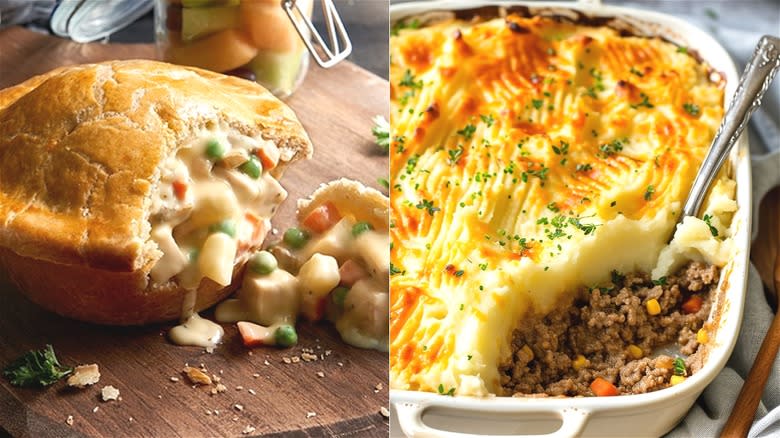
When it comes to hearty comfort foods, few dishes rival the allure of a perfectly baked pie, but in the realm of savory, two contenders stand out: The chicken pot pie and the shepherd's pie. Both boast rich histories and loyal followings, while each also brings its own unique blend of ingredients, flavors, and textures to the table. While many iterations of these pies have existed over time, like the U.K.'s cottage pie or fisherman's pie featuring a wealth of seafood fare, it seems these two top contenders have transcended time and culture. They maintain their comfort classic standards while also becoming an innovative dish within the realm of restaurants and diners alike.
In this comprehensive breakdown, we aimed to uncover the essence of these iconic pies, what makes them different, and how their recipes have held up over the years. From their origins steeped in tradition to the nuanced ingredients that define them, we'll dive deep into the heart of what makes chicken pot pie and shepherd's pie beloved staples in kitchens around the globe. Buckle up and prepare your taste buds for an exploration that promises to leave you craving a slice of pie, whichever side of the debate you may land on.
Read more: 15 Tips For Making The Best Meatloaf
What Is Chicken Pot Pie?
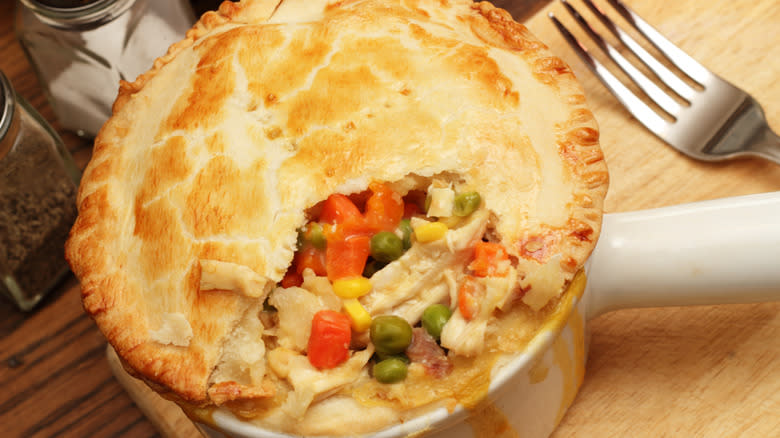
Chicken pot pie, with its flaky crust and savory filling, holds a special place in the hearts of many. Its origins trace back centuries to the Roman era, with roots firmly planted in European culinary traditions. While exact origins are murky, early versions of pot pies were found in medieval England, where meats and vegetables were encased in pastry crusts to create portable, hearty meals for laborers and travelers. However, many chefs in the Elizabethan era showcased their talent and reflected a royal family's wealth through the creation of pot pies, featuring creative designs on their crusts.
As European settlers made their way to America, they brought with them their culinary customs, including the concept of pot pies. Over time, regional variations emerged, incorporating local ingredients and techniques. In the United States, chicken pot pie gained popularity during the 19th century, particularly in rural communities where chickens were readily available and vegetables abundant.
By the mid-20th century, chicken pot pie had become a staple of American comfort food, gracing dinner tables across the nation. Its appeal lies not only in its delicious flavors but also in its versatility. Cooks could easily adapt the recipe to suit their tastes and available ingredients. Today, this delish dish remains a beloved classic, cherished for its nostalgic charm and satisfying taste. Whether homemade or store-bought, chicken pot pie continues to evoke warmth and comfort, reminding us of simpler times and the joy found in a humble slice of pie.
What Is Shepherd's Pie?
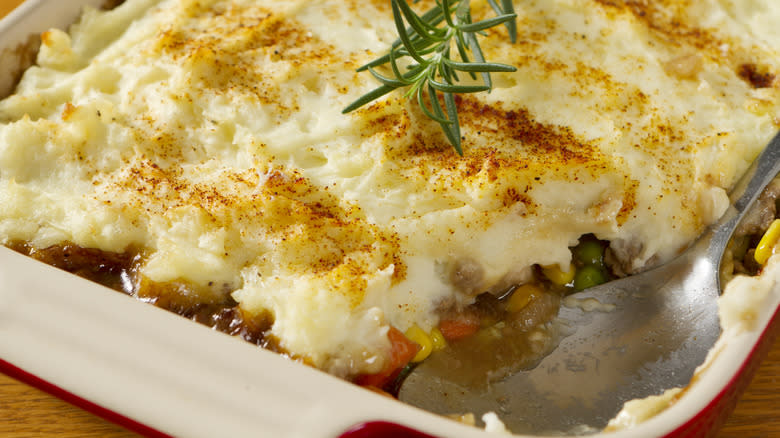
Shepherd's pie emerged in the 19th century as a means of repurposing leftover roasted meat in Scotland, particularly lamb or mutton, into a new and flavorful meal. However, the pie's origins are deeply rooted in British culinary history, as it transformed itself from the well-known cottage pie. This original variation, first documented in the late 18th century, used a traditional pastry crust over mashed potatoes and ground beef, along with seasoning and other simple ingredients.
Over time, the term "shepherd's pie" began to gain traction, reflecting the association of the dish with sheep farming and the shepherds who tended to them. Its popularity soared during periods of economic hardship, such as the Victorian era and both World Wars, when households in England, Ireland, and Scotland sought to stretch their ingredients further. Removing the pastry pie crust of a traditional pot pie, leaving only a layer of potatoes on top instead did just that.
Over the years, variations of shepherd's pie emerged, many replacing lamb with beef, particularly in regions where sheep farming was less prevalent. Additionally, variations of shepherd's pie incorporate different vegetables and seasonings, allowing for a degree of culinary creativity while maintaining the dish's fundamental essence. Even with all its revisions, this comfort classic continues to be enjoyed around the world, from local pubs to dinner tables, cherished for its rustic charm, rich flavors, and humble origins.
What's In Each Pie, And How Are They Made?
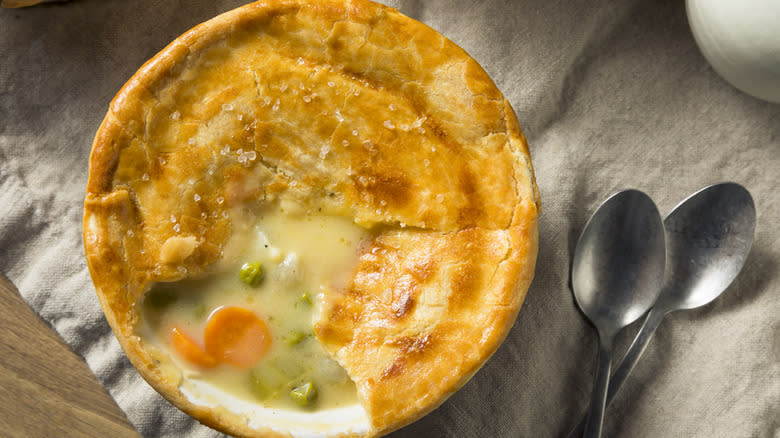
While both chicken pot pie and shepherd's pie share the comforting embrace of a meat and veggie filling, their ingredient profiles and preparation methods set them apart. Chicken pot pie typically features a tender mixture of cooked chicken and vegetables such as carrots, peas, and sometimes celery, all enveloped in a creamy sauce made from chicken broth and thickened with flour or cream. The filling is then encased in a pastry crust, either homemade or store-bought, and baked until golden and bubbly. With this option, you get the full look and essence of a baked pie.
On the other hand, shepherd's pie boasts a hearty filling of ground lamb or beef, cooked with onions, carrots, and often peas or corn, simmered in a rich gravy. The dish is crowned with a layer of creamy mashed potatoes, which form a golden crust when baked. This pie usually has a firmer consistency compared to the chicken pot pie's insides.
While both pies offer a cozy medley of meats, vegetables, and comforting carbohydrates, their distinct ingredients and preparation methods yield unique flavor profiles and textures. Which one is your favorite? One boasting a true pie essence or a mashed potato-covered dream boat?
How Do Chicken Pot Pie And Shepherd's Pie Differ In Taste And Texture?
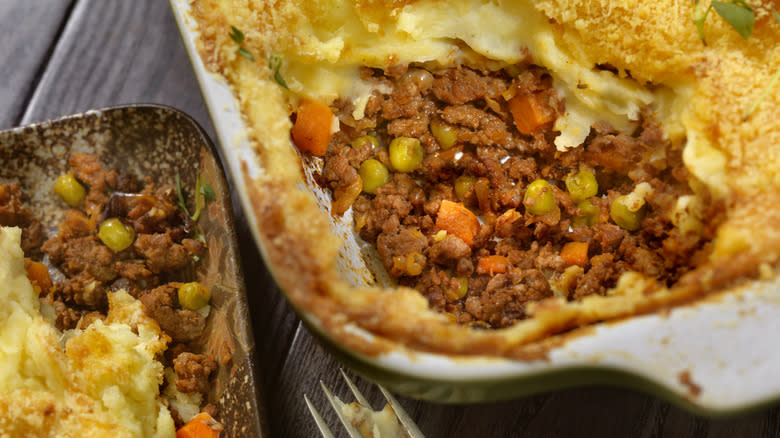
The contrast in taste and texture between chicken pot pie and shepherd's pie lies at the heart of their culinary appeal. Chicken pot pie delights with its creamy, savory filling encased in a flaky pastry crust. The tender chunks of chicken meld seamlessly with the vibrant vegetables, creating a harmonious blend of flavors. Each bite offers a comforting contrast between the buttery richness of the crust and the velvety smoothness of the filling.
While the filling in chicken pot pie is more of a liquid base that's thickened with flour, shepherd's pie calls in the texture of gravy. The pie itself offers robust, rustic flavors and hearty textures, with a combination of seasoned ground meat, vegetables, and savory gravy providing a satisfying depth of taste. The mashed potato topping adds a creamy, melt-in-your-mouth contrast, too, providing a killer mix of mouthfeels.
Ultimately, while both pies offer a warm embrace of comfort and flavor, their distinctive tastes and textures cater to different palates and preferences. Chicken pot pie tends to taste and sit on the lighter side, while the complexity of a shepherd's pie will warm you from the inside out.
What Is The Nutritional Value Of Each Pie?
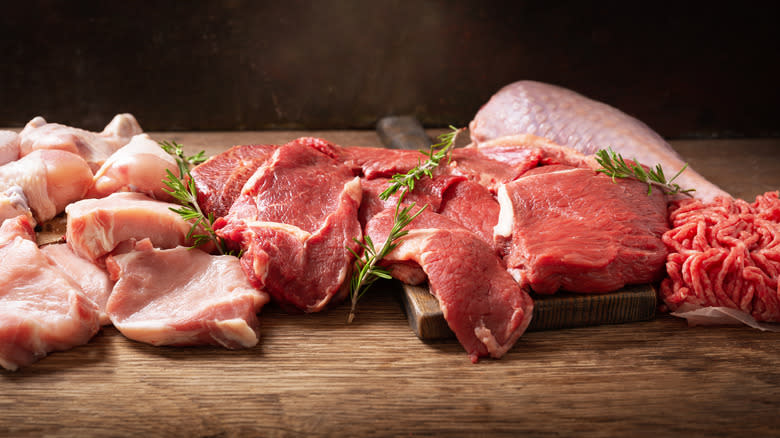
When comparing the nutritional value of chicken pot pie and shepherd's pie, several factors come into play, influencing their overall healthfulness. Chicken pot pie offers a good source of protein from the chicken and vegetables. However, it can also be high in saturated fat and calories, especially if made with butter-laden pastry dough. Store-bought versions may also contain added preservatives and sodium, which can contribute to health concerns when consumed in excess.
In contrast, shepherd's pie provides a similar protein boost from its ground meat and vegetables, but its mashed potato topping can vary in nutritional content. While potatoes offer vitamins and minerals, the addition of butter and cream in traditional recipes can increase the fat and calorie content. However, opting for lighter mashed potato toppings, or even substituting with mashed cauliflower, can enhance the dish's nutritional profile.
Overall, both pies can be part of a balanced diet when enjoyed in moderation and prepared with mindful ingredient choices. Incorporating plenty of vegetables, opting for lean meats, and using lighter cooking methods can help enhance the nutritional value of these classic comfort foods without sacrificing flavor.
How Much Do These Pies Cost To Buy Or Make?
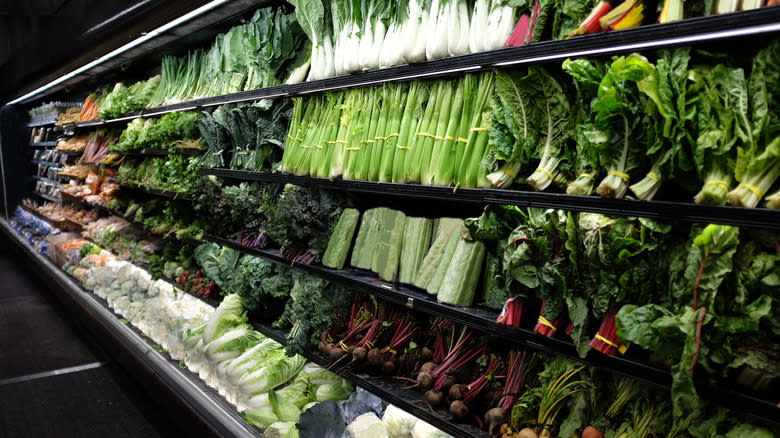
The cost of both pies can vary. Chicken pot pie often involves more expensive ingredients, such as chicken breast and pastry crust, meaning these pies can cost $20 or more depending on the size. However, homemade chicken pot pie allows for flexibility in ingredient selection and portion size, potentially reducing the overall price. Additionally, store-bought pot pies may come with a higher price tag due to packaging and convenience factors, as many pies start at around $15. However, there are some cheaper brands, such as Banquet and Marie Callender's, that can give you a personal-size pie for under $3 a box. Are they great? Not really, but they work in a pinch.
Shepherd's pie tends to be more budget-friendly, particularly when made at home. Ground beef is generally less expensive than chicken breast, making shepherd's pie a cost-effective option for families, starting at just $15 a pie. Additionally, shepherd's pie recipes often utilize pantry staples, further lowering the overall cost by using what's already in the house. When shopping for pre-made at the store, you may have fewer options, but there are plenty of brands, like Walmart's Great Value, that offer a full tray of shepherd's pie for under $10.
While prices may vary, the perks of a pot pie of any kind offer ample room for budget-friendly ingredients and creative substitutions. No matter which pie you like, you'll be able to personalize it to your taste and your wallet.
Read the original article on Daily Meal

